
 In the world of construction and infrastructure development, the quest for stability is paramount. Whether you're a property owner, manager, or builder, ensuring that the ground beneath your structures is solid and dependable is crucial.
In the world of construction and infrastructure development, the quest for stability is paramount. Whether you're a property owner, manager, or builder, ensuring that the ground beneath your structures is solid and dependable is crucial.
Polyurethane Foam
Unstable, eroded, or loose soil around infrastructure can result in settlement and damage to the structure. Voids can be filled, soil consolidated, and water migration halted by permeating the soil with ultra-low viscosity polyurethane foam.
Enhancing Load-Bearing Capacity and Erosion Control
One of the key strengths of polyurethane foam lies in its ability to significantly improve load-bearing capacity. Whether you're dealing with a residential driveway or a massive commercial structure, polyurethane foam offers a dependable solution to reinforce the ground beneath your feet.
A Sustainable Ground Stabilization Solution
In an era where sustainability is a top priority, NSF-approved polyurethane foam is an environmentally friendly option. NSF certification involves rigorous testing and inspection of manufacturing processes. Compliance with these standards, aligned with the Safe Water Drinking Act (SDWA), helps avoid water contamination and legal repercussions.
Beyond Soil: Rock and Gravel Stabilization
Ground stabilization isn't limited to just soil. Polyurethane foam's versatility extends to the stabilization of rock and gravel substrates, making it a comprehensive solution for a variety of scenarios. Whether you're dealing with rocky terrain or gravel, this technique can provide the stability you need.
The Ideal Choice for Lasting Stability
For those seeking a durable, one-time solution for unstable ground conditions, polyurethane foam is an ideal choice. It offers permanence, eliminating the need for repetitive applications and ensuring that your structures stand the test of time.



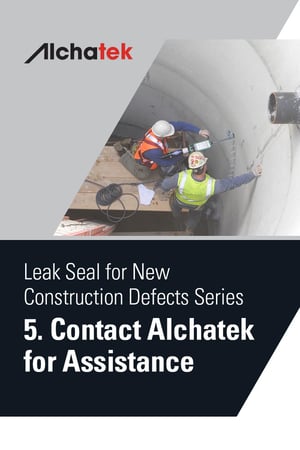 Taking proactive measures to stop early water intrusion issues that crop up during new construction projects is key to avoiding extensive damage and repairs later. Alchatek's leak prevention recommendations for new construction often utilize customized polyurethane sealants and barriers. These solutions provide maximum protection against water seepage through walls, floors, joints, entry points for utilities/conduits, and below-grade foundation surfaces.
Taking proactive measures to stop early water intrusion issues that crop up during new construction projects is key to avoiding extensive damage and repairs later. Alchatek's leak prevention recommendations for new construction often utilize customized polyurethane sealants and barriers. These solutions provide maximum protection against water seepage through walls, floors, joints, entry points for utilities/conduits, and below-grade foundation surfaces.


 Pipe penetration sealing is a critical aspect of waterproofing in new construction, addressing the potential leaks that occur where pipes and conduits penetrate walls and floors. These penetration points are often the weakest links in a building's defense against water intrusion, particularly in areas subjected to high moisture or water pressure.
Pipe penetration sealing is a critical aspect of waterproofing in new construction, addressing the potential leaks that occur where pipes and conduits penetrate walls and floors. These penetration points are often the weakest links in a building's defense against water intrusion, particularly in areas subjected to high moisture or water pressure.
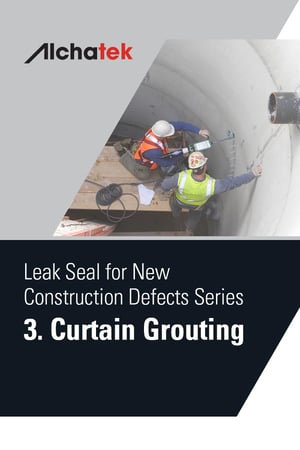 Curtain grouting is primarily employed to address multiple leaks at once. This technique originated in the 1960s. It was initially used to remedy water intrusion issues in sewer systems. Over time, its application expanded to a wide range of structures, driven by its efficacy in creating a barrier against water penetration. Curtain grouting involves injecting an expansive polyurethane grout through a wall or floor, into the soil on the other side. The grout then spreads out and expands, forming a 'curtain' that seals many leaks and cracks at once.
Curtain grouting is primarily employed to address multiple leaks at once. This technique originated in the 1960s. It was initially used to remedy water intrusion issues in sewer systems. Over time, its application expanded to a wide range of structures, driven by its efficacy in creating a barrier against water penetration. Curtain grouting involves injecting an expansive polyurethane grout through a wall or floor, into the soil on the other side. The grout then spreads out and expands, forming a 'curtain' that seals many leaks and cracks at once.
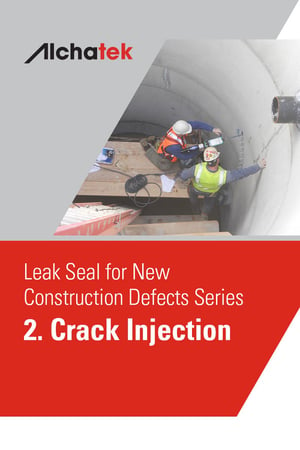 Water intrusion in new construction, a significant issue, often leads to costly defects. Crucial to this challenge are waterproofing membranes, which can be damaged during construction or compromised by cost-cutting measures. Similarly, inadequately sealed pipe and conduit penetrations can lead to leaks and electrical damage. A comprehensive approach, including proper installation of waterproofing and sealing penetrations, is vital. Polyurethane leak seal grouts are a key solution, effectively sealing against moisture intrusion and ensuring the durability of new buildings. This approach is essential for maintaining the integrity of construction projects against water damage. Crack injection with polyurethane grout is often employed in specific circumstances.
Water intrusion in new construction, a significant issue, often leads to costly defects. Crucial to this challenge are waterproofing membranes, which can be damaged during construction or compromised by cost-cutting measures. Similarly, inadequately sealed pipe and conduit penetrations can lead to leaks and electrical damage. A comprehensive approach, including proper installation of waterproofing and sealing penetrations, is vital. Polyurethane leak seal grouts are a key solution, effectively sealing against moisture intrusion and ensuring the durability of new buildings. This approach is essential for maintaining the integrity of construction projects against water damage. Crack injection with polyurethane grout is often employed in specific circumstances.
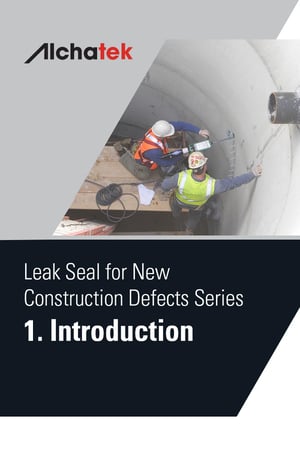 In the complex landscape of new construction, water intrusion stands as a formidable challenge, often leading to costly defects and prolonged maintenance issues. While waterproofing membranes play a crucial role in maintaining the integrity of the building envelope, there are other critical areas prone to leaks, such as pipe and conduit penetrations.
In the complex landscape of new construction, water intrusion stands as a formidable challenge, often leading to costly defects and prolonged maintenance issues. While waterproofing membranes play a crucial role in maintaining the integrity of the building envelope, there are other critical areas prone to leaks, such as pipe and conduit penetrations.
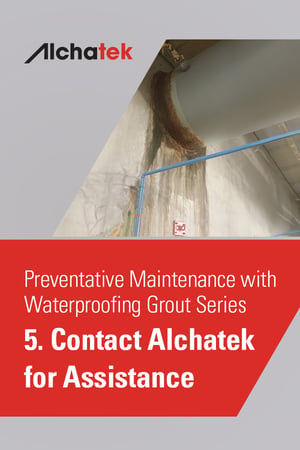 Alchatek's role in the fight against water damage is defined by expert technical guidance and specialized contractor referrals.
Alchatek's role in the fight against water damage is defined by expert technical guidance and specialized contractor referrals.
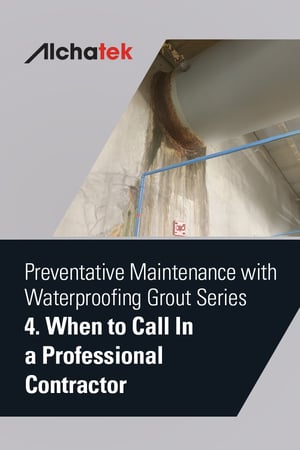 Water infiltration, even in its smallest form, can be a harbinger of more significant issues. The key is not to wait until the problem becomes extensive or recurrent but to seek professional assessment and intervention at the first indication of water presence.
Water infiltration, even in its smallest form, can be a harbinger of more significant issues. The key is not to wait until the problem becomes extensive or recurrent but to seek professional assessment and intervention at the first indication of water presence.
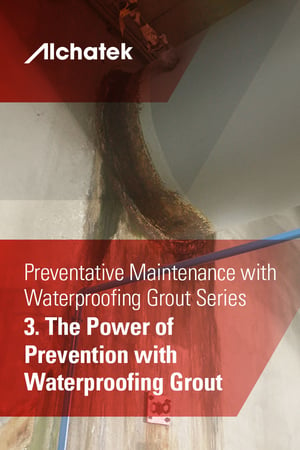 Polyurethane waterproofing grout is a type of sealant used extensively in construction and maintenance for its exceptional ability to prevent water ingress. It is a liquid polymer that, once applied, solidifies into a durable, water-resistant barrier. This grout is particularly effective in sealing cracks, joints, and other potential points of water entry in structures.
Polyurethane waterproofing grout is a type of sealant used extensively in construction and maintenance for its exceptional ability to prevent water ingress. It is a liquid polymer that, once applied, solidifies into a durable, water-resistant barrier. This grout is particularly effective in sealing cracks, joints, and other potential points of water entry in structures.
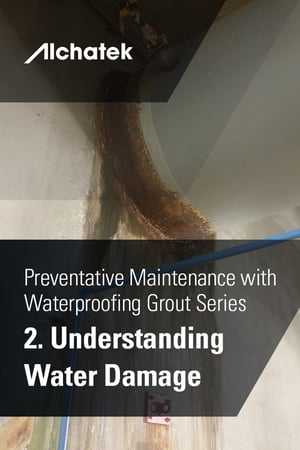 Water's destructive capacity stems from its ability to penetrate and alter the very materials that buildings are made of. Here are some key ways in which water inflicts damage:
Water's destructive capacity stems from its ability to penetrate and alter the very materials that buildings are made of. Here are some key ways in which water inflicts damage: